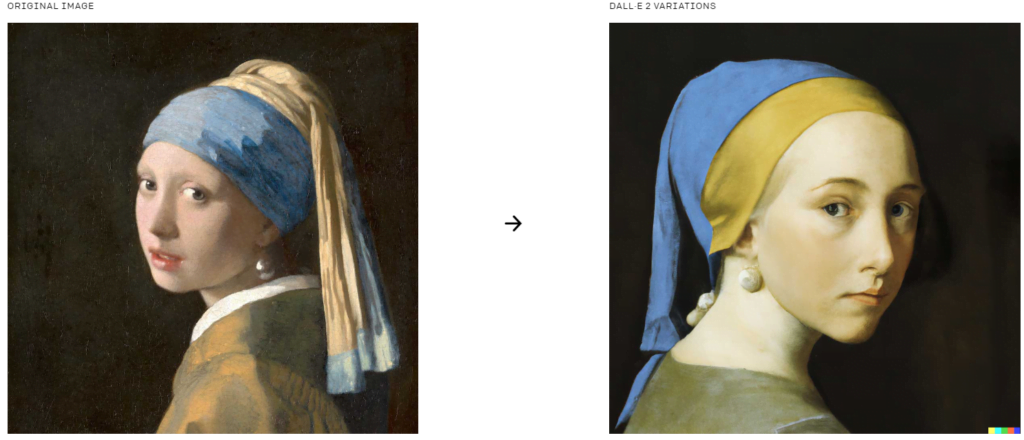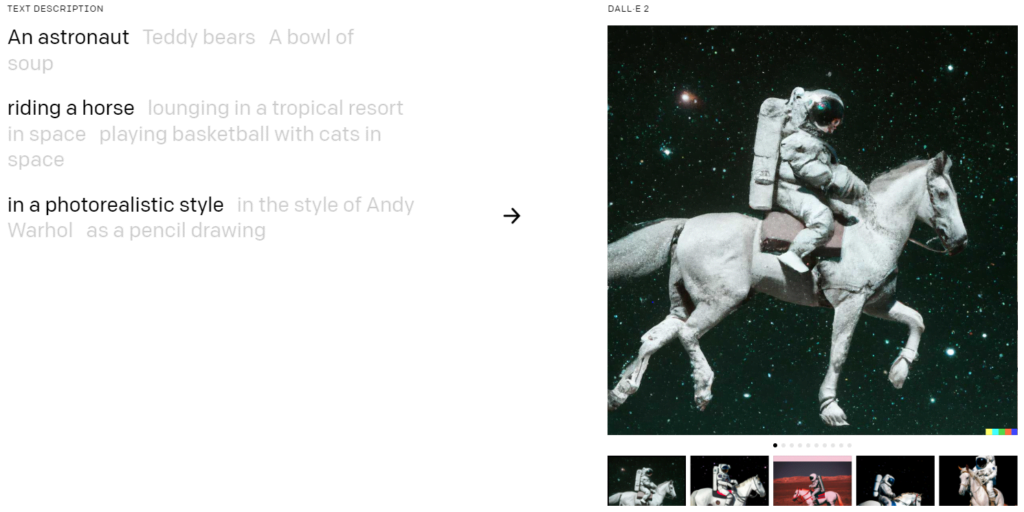Who said AI can’t be creative?
Working in digital marketing means we engage with different types of AI solutions. AI has been dominating the tech industry in the last few years and has been commonly used to deploy data driven products, solve challenges and enhance analytics.
However the power of AI doesn’t end there!
Since the launch of ‘DALL – E’ (early 2021 – named after Salvador Dali) an AI model trained to generate images from text descriptions, we are now starting to see how AI can contribute to design and creative outcomes. The AI model uses a dataset of text-image pairs, combines concepts, attributes and styles.
A few weeks ago, ‘DALL – E mini’ went live to the public and immediately became a viral sensation when users started generating some of the most creative (aka weird) images online. By putting together unusual combinations of words, users are able to generate original imagery – often with a hilarious outcome.
See example from ‘DALL – E Mini’ ‘”The Demogorgon from Stranger Things holding a basketball’:

Artists have jumped on ‘DALL – E – 2’ (updated version of DALL-E) and ‘MidJourney’, the 2 most popular open source tools at the moment. Even though there is currently a waiting list to gain access, once access is granted a user can subscribe to the platform with a monthly fee. The commercial use of images generated through both models are not well established yet.
The quality of images can be shockingly realistic and there is no end to someone’s imagination. Images can be upscaled and populate different variations, in theory you could create a realistic image of a person that doesn’t exist, a funny meme or even an ad.
Example of variations (original vs variation) from ‘DALL – E 2’:


But how do we see AI design developing in the advertising industry and what could the benefits be:
- Create countless variations of ad banners quickly, use an existing image to create different variations of it.
- Designers can collaborate with AI to add additional elements on images, make realistic edits or create new images.
- Content writers can enhance their text creativity, creating bespoke images or design briefs.
- Upscale image versions to high quality/ resolution
- Low overhead costs, reduce production and creative amendment turnaround times
- Design eye-catching creatives/ad banners or take a client’s logo/branding to another dimension.
These technologies open a new world of creative expression and they amplify possibilities through human and AI collaboration.
But they also raise concerns on what the meaning of creative design will become and the necessity and demand of design skills in the future. As the AI models are still in development mode we are expected to encounter unintentional bias (typing doctor, more likely to generate a white man, typing ‘nurse’ more likely to generate a woman) The models are also not fully developed yet and so bias on outputs should be expected, for example unless you are specific on gender, race etc it may produce stereotypical results. DALL-E have however put in place some safety measures to block any text that contains inappropriate words.
It will certainly be interesting to see how these models will be employed in digital marketing design, so watch this space.
Till then they are a great way to have fun, unleash your creative side and perhaps grow your own NFT portfolio!


